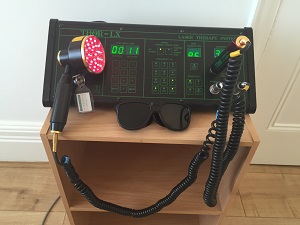
Achilles TendonitisAchilles tendonitis or tendonosis is referred to as a tendonopathy as it is a painful and debilitating swelling of the Achilles tendon, also called the achilles heel. The Achilles tendon is the largest and strongest tendon in the body and is located in the back of the lower leg, attaching to the heel bone (calcaneus), and connects the leg muscles to the foot. The Achilles tendon gives us the ability to rise up on our toes, during the act of walking, and Achilles tendonitis can make walking almost impossible. But it is also the most frequently ruptured tendon, and both professional and weekend athletes can suffer from Achilles tendonitis, a common overuse injury and swelling of the tendon. The achilles tendon do not have true inflammation but a watery type of swelling upon injury and therefore does not usually respond well to anti-inflammatory medication. Any number of events may trigger an attack of Achilles tendonitis, including: |
|
|
 |
Symptoms of Achilles Tendonitis:-
Because several conditions such as a partial tendon tear and heel bursitis have similar symptoms, you need to see your osteopath for a proper diagnosis. Osteopathic Treatment depends on the degree of injury to the tendon, but usually involves
Things that may prevent this injury:-
APTA recommends LLLT for Achilles Tendinopathies June 18, 2010 American Physical Therapy Association (APTA) Clinical Guidelines recommend Low Level Laser Therapy (LLLT) for Achilles tendinopathies. The report says “Clinicians should consider the use of low level laser therapy to decrease pain and stiffness in patients with Achilles tendinopathy.” Martin Davies Osteopaths regularly use laser therapy on soft tissue injuries and have had particular success with Achilles Tendinopathies. Please contact us for more information. 0161 483 6986 |
|
